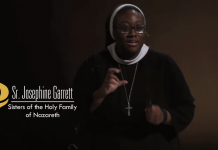
BY LAUREN SCHARMER
Reflecting on my five years working in youth ministry, I am convinced that the most important words we can say to our teens are: “I see you, I hear you, and you are not alone.” Earlier, in my first year of ministry, a teen came forward and shared a difficult and sensitive situation with me — my gut instinct back then was to go into “fix it” mode. Before the individual even finished talking to me, I immediately made a list in my mind of everything that I had to do. Although it is crucial that we follow necessary mandatory reporting laws, and use good crisis-management skills, what I failed to do in this situation was see the person (and not just the “problem”) that was being presented to me. First and foremost, we must acknowledge the courage that it takes for teens to bring their difficulties before us.
The problem of perfectionism
We live in a world and culture that tells our teens that they ought to project perfection to the outside world — that everything from their social media posts, to lunch table discussions, to academic participation, has to be shrouded in perfection. Think about it — this hyper-connected generation — from the moment that they wake up to the moment they go to bed, most are confronted with pressures from their phones, peers, teachers, and parents. To many, any exhibition of weakness is seen as failure, and asking for help is feared, an act of isolation.
Part of our responsibility to teens is not only to provide a safe space to come to, but to acknowledge and encourage them right where they are. As John Paul II reminds us:
“We are not the sum of our weaknesses and failures, we are the sum of the Father’s love for us and our real capacity to become the image of His Son Jesus.”
It is our great privilege to remind them that they are the sum of the Father’s love for them, not the sum of their presenting problems or weaknesses.
When any students we work with come to us, they don’t want us to solve their problems, they want to know that they’re heard.
May the words we communicate show them that we aren’t trying to fix them, rather, we are with them and for them.
How to help
How do we do this, practically-speaking? For me, it has always started with seeking the teen out, and asking them if they wanted to talk or if there was anything I can do in that moment. If they accept the invitation for a conversation (which, in my experience, they always do), then I ask them two things:
1. How is this affecting your day to day interactions?
2. What would it mean for you if you woke up tomorrow and you suddenly didn’t have to deal with this? (This being the presenting problem that they brought to me in the first place).
Asking these questions shows them that we are interested in seeing how this is affecting their daily life (that we aren’t just interested in solving the problem, but we’re interested in all parts of their lives), and also, that we are wanting to hear what they are really longing for.
Where the world offers increasing isolation, we can be truth-bearers who remind teens that they are more than their difficulties. No matter what is brought before us — family struggles, friendship problems, or prom-date drama — the message remains the same: they are seen, heard, and not alone.
Practically, this looks like:
- listening carefully while maintaining eye contact
- acknowledging what has been brought before us
- following up appropriately
What I failed to realize in that conversation with that teen all those years ago was this: It is not up to me to “fix” them, but to point them to the God who made them and hears them.
As workers in the vineyard, if we believe what St. Paul says — “for when I am weak, then I am strong” (2 Corinthians 12:10) — we must cultivate a place and space where we, and others, can be known in our perceived weakness.
Lauren Scharmer, MSW, has served as the Director of Youth Ministry for Saint Louis Life Teen for the last five years. See SaintLouisLifeTeen.org.
Image credit: Daisy Daisy / ShutterStock 1234028890




